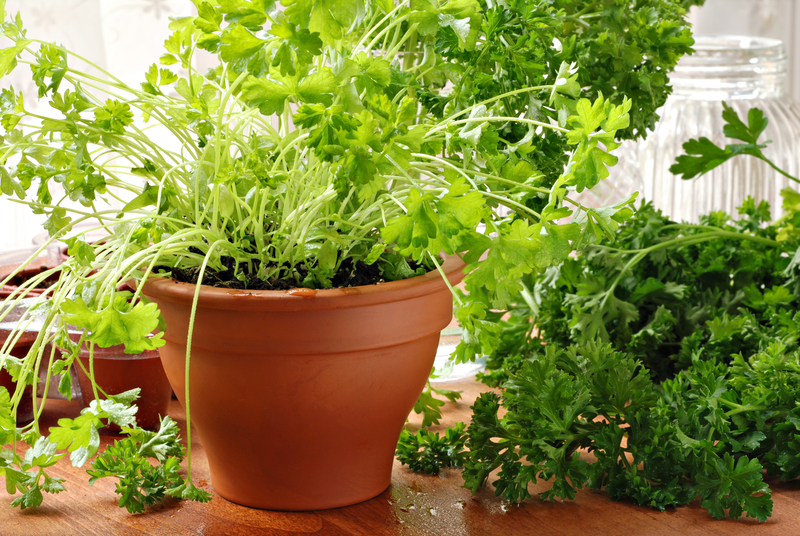How to Select Low-Maintenance Plants for Window Boxes
Looking for an easy way to bring color and life to your home's exterior? Low-maintenance window box plants are the perfect solution to brighten windowsills, balconies, and patios--without becoming a burden. Whether you're a busy homeowner, a novice gardener, or someone with little time for plant care, knowing how to select low-maintenance plants for window boxes will help you build a beautiful, thriving display that's simple to care for. This comprehensive guide will walk you through the process of choosing the best plants and maintaining a thriving window garden with minimal effort.
Why Choose Low-Maintenance Plants for Window Boxes?
Before diving into plant selection, it's important to understand why low-maintenance window box flowers and greenery are ideal, especially for gardeners of all skill levels:
- Effortless Beauty: Low-maintenance plants require less watering, pruning, and deadheading, allowing your window boxes to look lush all season long with minimal care.
- Time and Energy Savings: You'll spend less time on daily chores, freeing you up for other enjoyable activities.
- Adaptability: These plants can withstand variable outdoor conditions, meaning you won't worry as much about weather changes.
- Cost-Effective: Hardy, self-sustaining plants need fewer fertilizers and replacements, saving you money over time.
- Ideal for Beginners: Even if you're new to gardening, low-care window box plants make it easy to achieve professional results.

Best Types of Low-Maintenance Plants for Window Boxes
Selecting the right species is crucial. Here are the most reliable categories for window box plants that don't need much maintenance:
1. Hardy Annuals
Annuals bloom for one season and offer vibrant color. Look for those labeled as "tough" or "self-cleaning," because they drop spent flowers naturally and rebound from neglect.
- Petunias: Especially the 'Wave' and 'Supertunia' varieties, thriving in sun with little deadheading required.
- Marigolds: Drought-resistant, bright, and rarely troubled by pests.
- Bacopa: Cascading white or purple blooms and little need for deadheading.
- Impatiens: Great for shady boxes and require moderate water, but are generally low effort.
2. Perennials for Window Boxes
While usually grown in garden beds, many compact perennials can thrive for years in window boxes, saving you from yearly replanting.
- Heuchera (Coral Bells): Colorful foliage, handles both sun and shade, and little watering needed once established.
- Lamb's Ear: Velvety leaves, drought tolerance, and little upkeep.
- Hostas (for shaded boxes): Lush green foliage; just be aware of slugs.
3. Succulents and Cacti
Succulents and cacti are some of the easiest window box plants, thriving on neglect and requiring only occasional watering.
- Sempervivum (Hens and Chicks): Tolerate drought and poor soil.
- Sedum (Stonecrop): Many trailing types provide texture and resilience.
- Aloe Vera: Minimal water and adds architectural interest.
4. Herbs for Functional Window Boxes
Many culinary herbs are not only useful in the kitchen, but also tough and forgiving in container gardens.
- Thyme: Compact, aromatic foliage that tolerates dry soil.
- Oregano: Grows vigorously, sometimes sprawling over the edge in attractive waves.
- Chives: Hardy even in colder climates and requires little water.
- Rosemary: Woody stems withstand infrequent irrigation.
5. Trailing and Cascading Plants
Trailing plants add dimension and softness to your arrangement while covering up box edges. Choose species that don't mind skipped waterings or hot weather.
- Sweet Potato Vine: Dramatic, fast-growing vines that require little attention.
- Ivy (English Ivy): An evergreen classic that is adaptable, but be mindful in some regions for invasiveness.
- Vinca Minor: Tough, glossy leaves and resilience to drought.
Factors to Consider When Selecting Low-Maintenance Window Box Plants
Selecting the right plants is about more than choosing what looks good. Here's how to ensure your window box garden thrives with as little input as possible:
1. Sunlight Exposure
- Full Sun (6+ hours): Pick sun-hardy plants like petunias, succulents, rosemary, and marigolds.
- Partial Sun: Impatiens, heuchera, and some herbs will tolerate a mix of sun and shade.
- Full Shade: Hostas and certain ivies thrive with little to no direct sunlight.
Before purchasing any plant, check your window's orientation. South- and west-facing boxes usually get more sun, while north- and east-facing receive less.
2. Watering Requirements
- Choose drought-tolerant species if you often forget to water.
- Plants with succulent leaves (like sedums) store water well.
- Herbs like thyme and rosemary withstand occasional drying out.
3. Growth Habit and Container Size
Some plants can take over small spaces, while others stay compact. For easy-care window box displays:
- Select Slow Growers: Avoid fast-spreading or invasive species.
- Balance Upright and Trailing Plants: Use vertical growers in the back and trailers in the front to maximize visual appeal and minimize crowding.
4. Disease and Pest Resistance
- Seek varieties labeled as "disease-resistant" at your local garden center.
- Hard-leaved and aromatic plants (like lavender and rosemary) deter many insect pests naturally.
- Opt for native plants suited to your local climate--they typically require less intervention.
Design Tips for Low-Maintenance Window Boxes
A beautiful box doesn't have to be complicated. With the right approach, you can achieve a lush, season-long display with minimal effort.
The "Thriller, Filler, Spiller" Method
This traditional window box formula combines three plant types:
- Thriller: Upright, eye-catching plants for height (e.g., upright rosemary, heuchera).
- Filler: Bushy, mid-sized blooms or foliage (e.g., marigolds, compact petunias, oregano).
- Spiller: Trailing or cascading plants (e.g., bacopa, sweet potato vine, vinca minor).
Choose all three from the easy-care category for a stunning, low-maintenance result.
Color and Texture
- Mix foliage colors (purple, silver, green) for interest throughout the season.
- Combine small flowers and large leaves for a dynamic look.
- Stagger bloom times to ensure continuous color.
Care and Maintenance Tips for Stress-Free Success
Even carefree window box plants need a little attention to look their best. Here's how to keep maintenance easy and results thriving:
- Choose Quality Potting Mix: Use a lightweight, well-draining mix. Add slow-release fertilizer if desired.
- Water Wisely: Water thoroughly but less frequently. Let soil dry out between waterings (unless using thirstier annuals).
- Avoid Overcrowding: Space plants so air can circulate, decreasing the risk of mold and mildew.
- Monitor for Pests: Check leaves for signs of bugs or disease, but most low-maintenance choices have few problems.
- Renew Mulch or Pebble Topper: Adding a thin layer reduces evaporation and keeps weeds down.
- Remove Dead Growth: Snip away withered stems or brown leaves biweekly for tidiness--an easy chore!
Best Practices for Year-Round Window Boxes
Low-maintenance window box gardens aren't limited to one season! With some planning, you can have continuous beauty year-round.
Spring & Summer:
- Fill with hardy annuals, sun-lovers, and flowering perennials.
- Feed once at planting with a slow-release fertilizer to minimize mid-season applications.
Autumn:
- Switch to ornamental grasses, evergreen herbs (like sage and rosemary), and late-season bloomers.
Winter:
- For mild climates, use evergreens like hebe, dwarf conifers, or ivy.
- In colder zones, add pinecones, branches, or festive decorations for color and texture until spring returns.
Top 15 Low-Maintenance Plants for Window Boxes
- Supertunia Petunias (trailing, sun-loving annuals)
- Bacopa (self-cleaning with delicate flowers)
- Sweet Potato Vine ('Margarita' or 'Blackie' for vibrant foliage)
- Coleus (for shade or part shade, fantastic foliage)
- Heuchera (coral bells, all-season leaf color)
- Lamb's Ear (soft, silvery, and drought-tolerant)
- Sedum Spurium (mat-forming succulent)
- English Ivy (trailing evergreen)
- Marigold (cheerful color, sun tolerance)
- Thyme (herbal and ornamental)
- Oregano (tough and aromatic)
- Chives (hardy and edible)
- Vinca Minor (evergreen, trailing blue flowers)
- Dusty Miller (silvery leaves, heat tolerant)
- Hosta (shady boxes, bold leaves)

Frequently Asked Questions
What are the easiest plants for window boxes in full sun?
Choose petunias, marigolds, succulents (like sedum), vinca, and herbs such as rosemary and thyme for boxes that get lots of direct sunlight. These tough varieties withstand heat and infrequent watering.
Which flowers need the least care for window boxes?
Low-care window box flowers include bacopa, geraniums, marigolds, and wave petunias.
Can succulents grow in window boxes?
Absolutely! Succulents make some of the lowest-maintenance window box plants, provided your containers have drainage holes and get plenty of sunlight.
How do I make sure my window box plants don't die when I'm on vacation?
Mulch the top of the soil, choose drought-tolerant species, and consider installing a simple drip irrigation system or using self-watering containers. Ask a neighbor to check in if gone for longer than a week.
Do herbs thrive in window boxes?
Most definitely. Herbs such as chives, thyme, oregano, mint, and sage are all low-maintenance window box favorites--plus, you get fresh seasonings right outside your kitchen!
Conclusion: Create Effortless Window Box Beauty
Learning how to select low-maintenance plants for window boxes ensures that anyone--regardless of time commitment or gardening expertise--can enjoy lush, colorful displays throughout the year. Focus on tough, drought-resistant varieties suited for your climate and sunlight exposure, and design with a mixture of heights, textures, and trailing plants for a professional look. By choosing wisely, incorporating the right care practices, and planning for seasonal interest, you can transform any windowsill or balcony into a thriving, stress-free oasis.
Ready to start your own stunning, low-upkeep window box garden? Use these tips and plant suggestions for effortless blooms and greenery--no green thumb required!